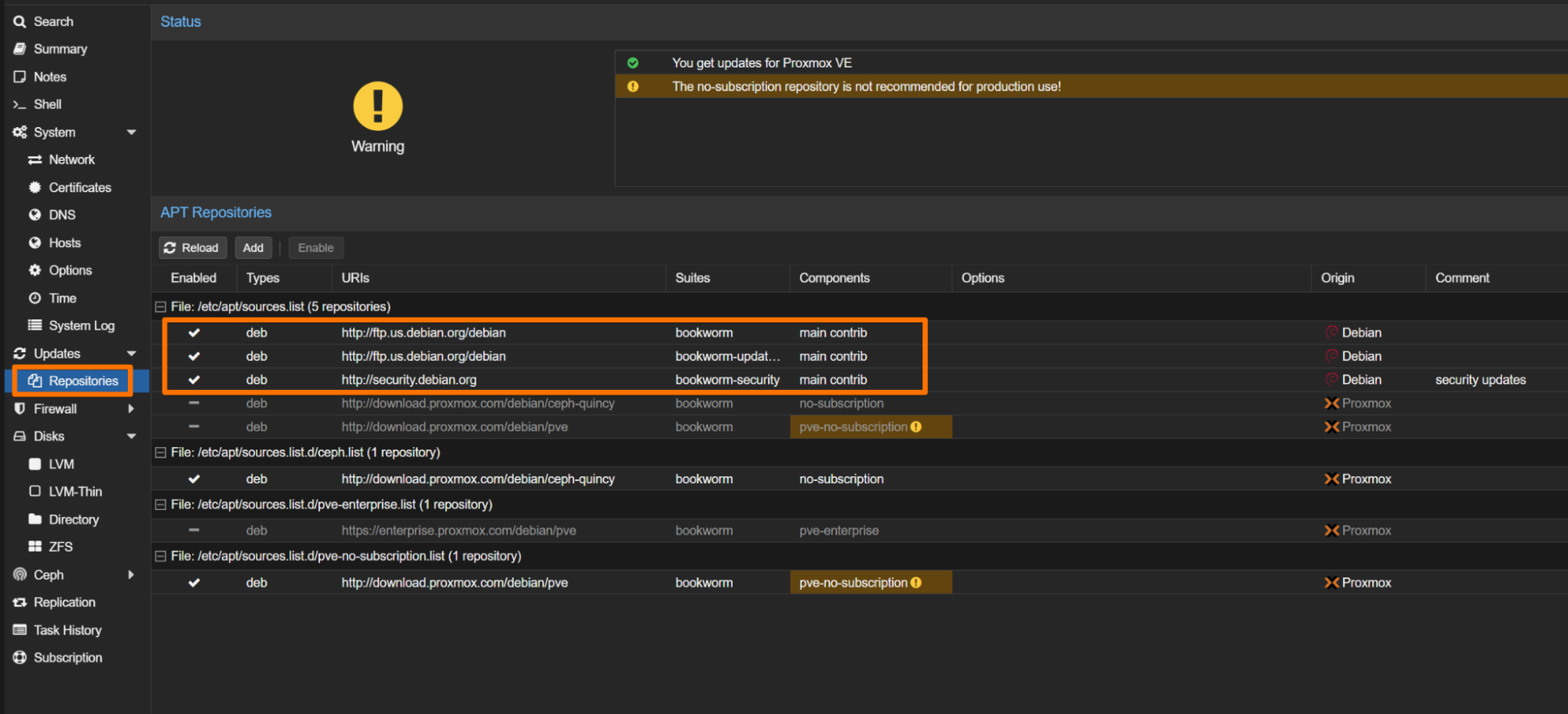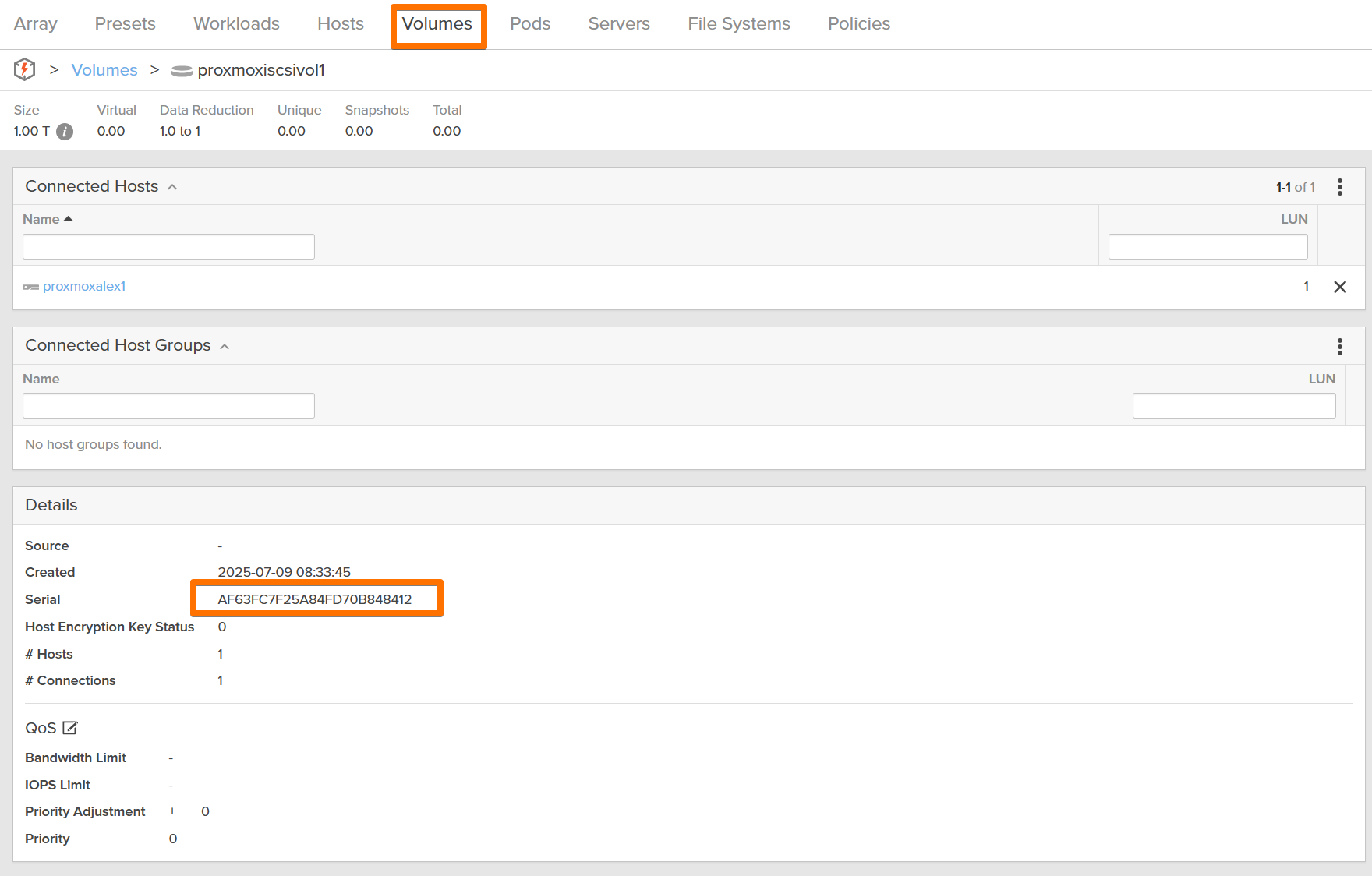Setting Up Nested Proxmox VE iSCSI Configuration with Pure Storage FlashArray
July 12, 2025
Nested Proxmox VE iSCSI Configuration with Pure Storage FlashArray
Purpose
The purpose of this article is to detail the steps of the iSCSI configuration of the Proxmox VE instance nested on Broadcom VMware ESXi for home lab or testing environment.
Executive Summary
In response to the significant licensing changes introduced by Broadcom following its acquisition of VMware, many customers are actively exploring alternatives to VMware for their virtualization infrastructure. Proxmox VE has emerged as a compelling open-source option due to its flexibility, reliability, and growing community support.
However, not all organizations have spare hardware available to evaluate Proxmox in a production-like environment. This article provides a practical guide for running nested Proxmox VE inside a VMware environment, enabling customers to test and validate Proxmox without disrupting their current infrastructure.
The guide walks through the process of deploying Proxmox as a nested VM and connecting it to a Pure Storage FlashArray using in-guest iSCSI with multipath support. This setup simulates a real-world configuration, allowing teams to evaluate Proxmox functionality and storage integration capabilities with enterprise-grade all-flash storage.
Whether you’re a storage architect, virtualization admin, or infrastructure decision-maker, this article offers a clear path to hands-on testing of Proxmox VE with Pure Storage—helping accelerate informed decisions around next-generation datacenter platforms.
Prepare the nested Proxmox VE Server on VMware
There are good instructions on how to install Proxmox VE VM nested on VMware
https://www.virtualizationhowto.com/2022/01/nested-proxmox-vmware-installation-in-esxi/
If you are interested in my specific configuration, here it is

Update the Debian repositories for unlicensed Proxmox VE
- Login to Proxmox VE Instance with root privileges

- Ensure that nightly package updates were installed successfully

If the updates failed, you will need to add no-subscription repositories by editing the sources.list
nano /etc/apt/sources.list

It should look like this:

Network Interfaces configuration for nested Proxmox
You will need to have 2 additional network interfaces on the nested VM to configure in-guest iSCSI. They need to be on your iSCSI Network on ESXi.
On VMware side go to the VM, right-click and go to Edit Settings:


On the Proxmox VE server:
List all network interfaces:
ip link show

Configure IPv4 addresses
Using Proxmox Web GUI
Go to Datacenter → [Your Node] → System → Network
Click Create → Linux Bridge (or Linux Bond if bonding)
Configure the bridge with your desired IP settings
Apply the configuration

Check that it is configured correctly:

Remember to hit the “Apply Configuration” button before proceeding.
Setting MTU to 9000
In /etc/network/interfaces:
nano /etc/network/interfaces
Add mtu 9000 to each interface:

Apply changes:
systemctl restart networking
Verify MTU:

Install and Configure iSCSI Initiator
Install required packages:
apt install open-iscsi multipath-tools lsscsi sg3-utils
Configure iSCSI initiator:
nano /etc/iscsi/iscsid.conf
Recommended settings for Pure Storage:
# Authentication (if using CHAP)
node.session.auth.authmethod = CHAP
node.session.auth.username = your_username
node.session.auth.password = your_password
# Timeouts
node.session.timeo.replacement_timeout = 120
node.conn[0].timeo.login_timeout = 15
node.conn[0].timeo.logout_timeout = 15
node.conn[0].timeo.noop_out_interval = 5
node.conn[0].timeo.noop_out_timeout = 5
# Session settings
node.session.iscsi.InitialR2T = No
node.session.iscsi.ImmediateData = Yes
node.session.iscsi.FirstBurstLength = 262144
node.session.iscsi.MaxBurstLength = 16776192
node.conn[0].iscsi.MaxRecvDataSegmentLength = 262144
Find out the IQN that is configured in Proxmox. In the shell run the following command:
cat /etc/iscsi/initiatorname.iscsi

Configure Multipath Tools
Edit multipath configuration:
nano /etc/multipath.conf
By default this file doesn’t exist, so you need to create it.
Pure Storage optimized configuration:
defaults {
user_friendly_names yes
find_multipaths yes
}
devices {
device {
vendor "PURE"
product "FlashArray"
path_grouping_policy "group_by_prio"
path_selector "round-robin 0"
path_checker "tur"
hardware_handler "1 alua"
prio "alua"
failback immediate
rr_weight uniform
no_path_retry 18
fast_io_fail_tmo 10
}
}
Enable and start services:
systemctl enable iscsid
systemctl enable open-iscsi
systemctl enable multipath-tools
systemctl start iscsid
systemctl start open-iscsi
systemctl start multipath-tools
Expected output:

Pure Storage Array Configuration for Host and Volumes
On Pure Storage Array - Configure host and connect volume(s)
On the Pure Storage FlashArray, create a host object with the IQN that you just discovered:
Use this IQN to create host objects in the Pure Storage Purity management interface:
- Go to Storage > Hosts.
- Click the + icon.
- In the pop-up window, give your host a name and under personality select none
- Add the Proxmox host IQN under the Host Ports section.

Create a new volume and connect it to the Proxmox host you just created
Create a volume/LUN for your host:
- Go to Storage > Volumes.
- Click the + icon.
- In the pop-up window, give your volume a name, volume size and add your newly created hosts to this volume/LUN.


Connect to Pure Storage Target
Discover targets:
On Pure Storage find what are your iSCSI target IP Addresses:

There is a known limitation with open-iscsi. You can’t bind both hwaddress and net_ifacename on the same interface. You need to choose one binding method. I chose the net_ifacename:
Use net_ifacename (replace with your ens interface ID)
# Delete and recreate with only interface name
iscsiadm -m iface -I ens224 -o delete
iscsiadm -m iface -I ens224 -o new
iscsiadm -m iface -I ens224 -o update -n iface.net_ifacename -v ens224
# Do the same for your second interface
iscsiadm -m iface -I ens256 -o delete
iscsiadm -m iface -I ens256 -o new
iscsiadm -m iface -I ens256 -o update -n iface.net_ifacename -v ens256
Verify the configuration:
iscsiadm -m iface -I ens224 -o show
iscsiadm -m iface -I ens256 -o show
Now proceed with discovery:
Note that 172.16.50.44 is my home lab IP address for Pure Storage on one of the interfaces. Replace it with yours.
# Discovery using each interface
iscsiadm -m discovery -t st -p 172.16.50.44:3260 -I ens224
iscsiadm -m discovery -t st -p 172.16.50.44:3260 -I ens256
Login to targets:
iscsiadm -m node --login
You should see something similar to this output.

Verify connections:
iscsiadm -m session -P 3
Part of the expected output:

Check multipath status:
multipath -ll
You should see something like:

Verify SCSI Devices
After installing lsscsi:
lsscsi
If LUNs still show as “unknown,” try:
rescan-scsi-bus
Or manually rescan:
echo "- - -" | sudo tee /sys/class/scsi_host/host*/scan
You need to make the sessions persistent through reboots, otherwise you will need to login iscsiadm -m node -L all every time a host reboots.
In order to make the sessions persistent, use the following command on every host:
iscsiadm -m node --op update -n node.startup -v automatic
Then login to the targets:
iscsiadm -m node --loginall=automatic
Find out what the Pure LUN S/N is:

In Proxmox Shell:
/lib/udev/scsi_id --whitelisted --device=/dev/sdc

Compare to Pure Storage GUI:

Test connectivity and performance:
Test jumbo frames:
ping -M do -s 8972 172.16.50.44

Basic I/O test:
dd if=/dev/zero of=/dev/mapper/mpatha bs=1M count=100 oflag=direct
The multipath device will appear as /dev/mapper/mpatha and can be used like any block device in Proxmox for VM storage.
root@proxmox1:~# dd if=/dev/zero of=/dev/mapper/mpatha bs=1M count=100 oflag=direct
100+0 records in
100+0 records out
104857600 bytes (105 MB, 100 MiB) copied, 0.601568 s, 174 MB/s
On Pure Storage FlashArray GUI dashboard you should see the spike corresponding to the test you just ran:

Nest Steps
Pick one based on your goals:
If you’re testing performance:
Use /dev/mapper/mpatha for any workload benchmarking (e.g., with fio or inside a VM passthrough).
If you want to create a Proxmox storage volume:
Option A: LVM Volume Group
pvcreate /dev/mapper/mpatha
vgcreate pure-vg /dev/mapper/mpatha
Then add it to Proxmox via GUI or /etc/pve/storage.cfg:
lvm: pure-lvm
vgname pure-vg
content images,rootdir
Option B: Format and mount as block device
mkfs.xfs /dev/mapper/mpatha
mkdir /mnt/pure-test
mount /dev/mapper/mpatha /mnt/pure-test
In my case, I chose a different name:
root@proxmox1:~# mkfs.xfs /dev/mapper/mpatha
mkdir /mnt/pure-iscsi-lun
mount /dev/mapper/mpatha /mnt/pure-iscsi-lun
meta-data=/dev/mapper/mpatha isize=512 agcount=4, agsize=67108864 blks
= sectsz=512 attr=2, projid32bit=1
= crc=1 finobt=1, sparse=1, rmapbt=0
= reflink=1 bigtime=1 inobtcount=1 nrext64=0
data = bsize=4096 blocks=268435456, imaxpct=5
= sunit=0 swidth=0 blks
naming =version 2 bsize=4096 ascii-ci=0, ftype=1
log =internal log bsize=4096 blocks=131072, version=2
= sectsz=512 sunit=0 blks, lazy-count=1
realtime =none extsz=4096 blocks=0, rtextents=0
Discarding blocks...Done.
Notes:
Don’t use /dev/sdX paths — stick to /dev/mapper/mpatha
You can give it a friendly name in multipath.conf if you want:
multipaths {
multipath {
wwid "3624a9370af63fc7f25a84fd70b848412"
alias pure-data-lun
}
}
Then multipath -r will rename it from mpatha to pure-data-lun
Since I chose to make it a block device, Proxmox won’t show it in the web UI by default — unless you configure it as a custom directory storage backend.
Instructions: Mount & Add as Directory Storage
If you’ve formatted and mounted the LUN (e.g., to /mnt/pure-iscsi-lun), like I did, use this method for storing ISOs, backups, containers, or VM images.
- Confirm it’s mounted:
df -h | grep pure-iscsi-lun
- Edit storage configuration:
nano /etc/pve/storage.cfg
Add this section:
dir: pure-iscsi-lun
path /mnt/pure-iscsi-lun
content iso,backup,vztmpl,images
maxfiles 5
Save and exit. Then check the status:
pvesm status
root@proxmox1:~# pvesm status
Name Type Status Total Used Available %
local dir active 73989044 3156464 67028420 4.27%
local-lvm lvmthin active 156962816 37655379 119307436 23.99%
pure-iscsi-lun dir active 1073217536 7515784 1065701752 0.70%
pure-storage dir active 73989044 3156464 67028420 4.27%
pure-storage-iso dir active 73989044 3156464 67028420 4.27%
Now visible under Datacenter → Storage → pure-iscsi-lun in the Proxmox UI.

Congratulations! You are done!